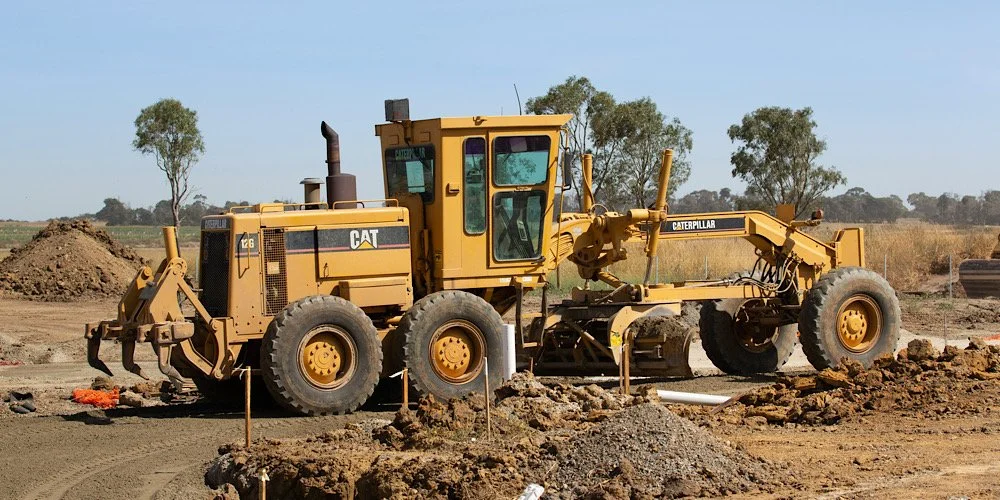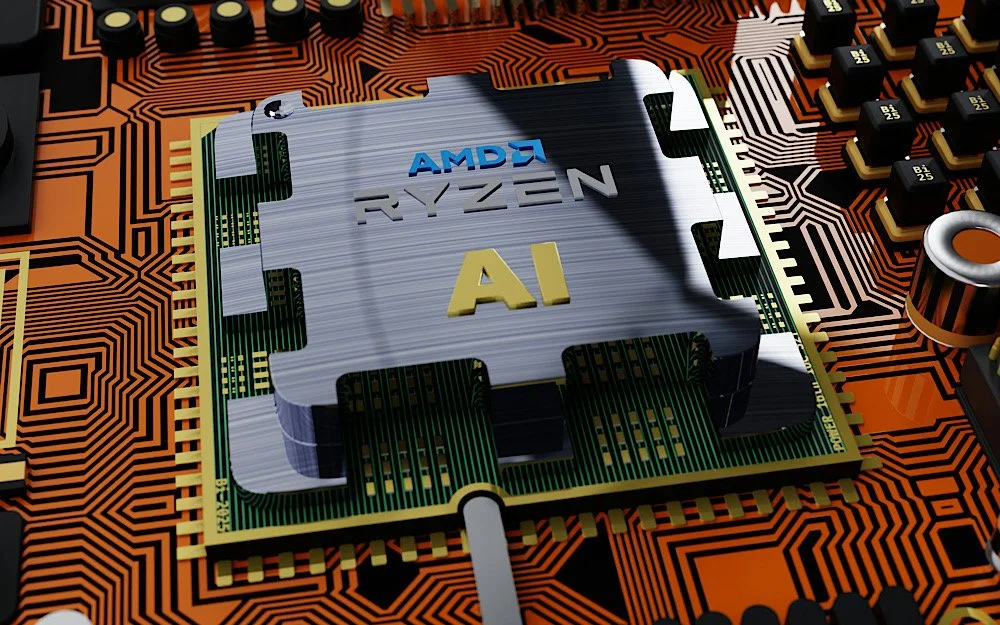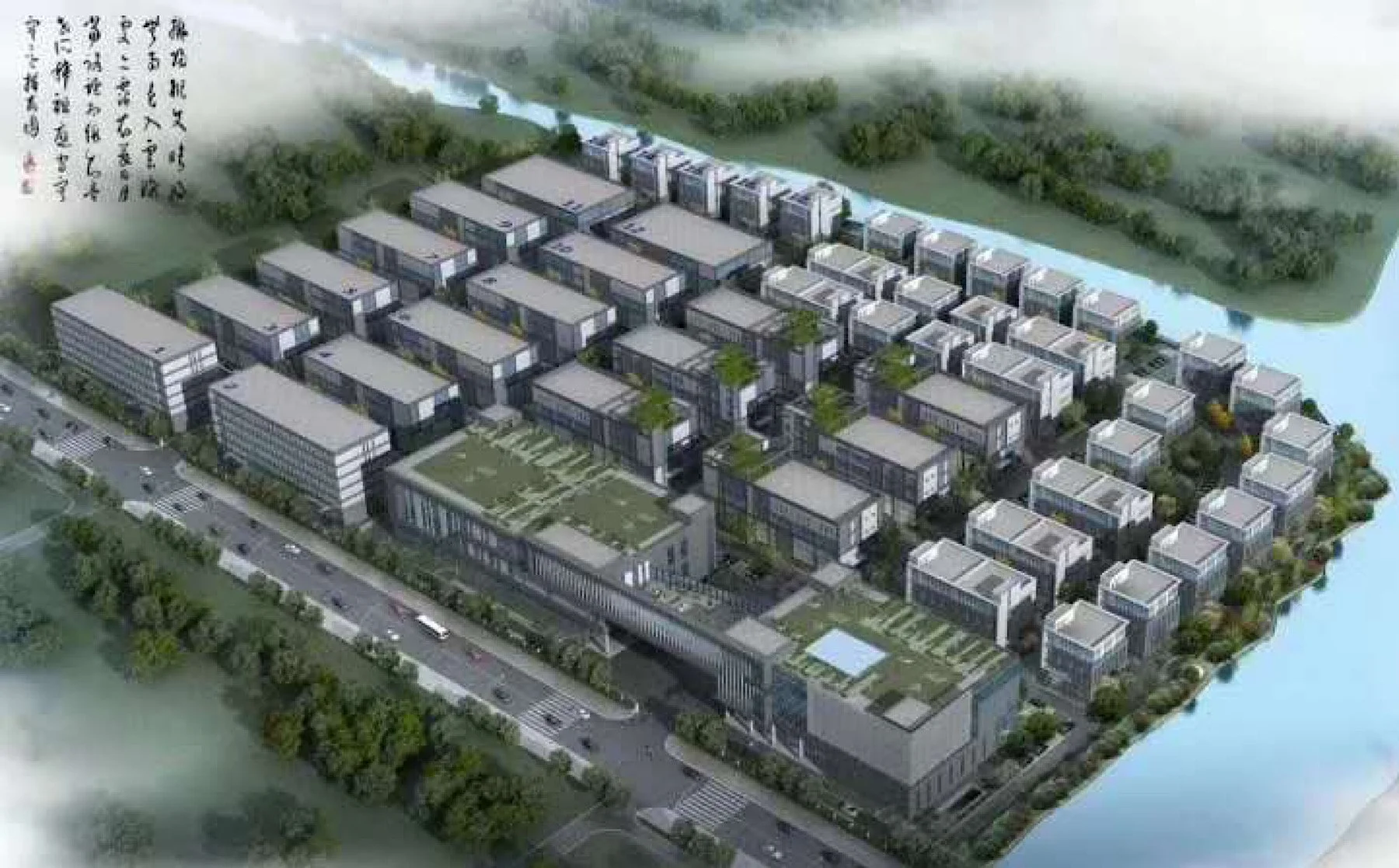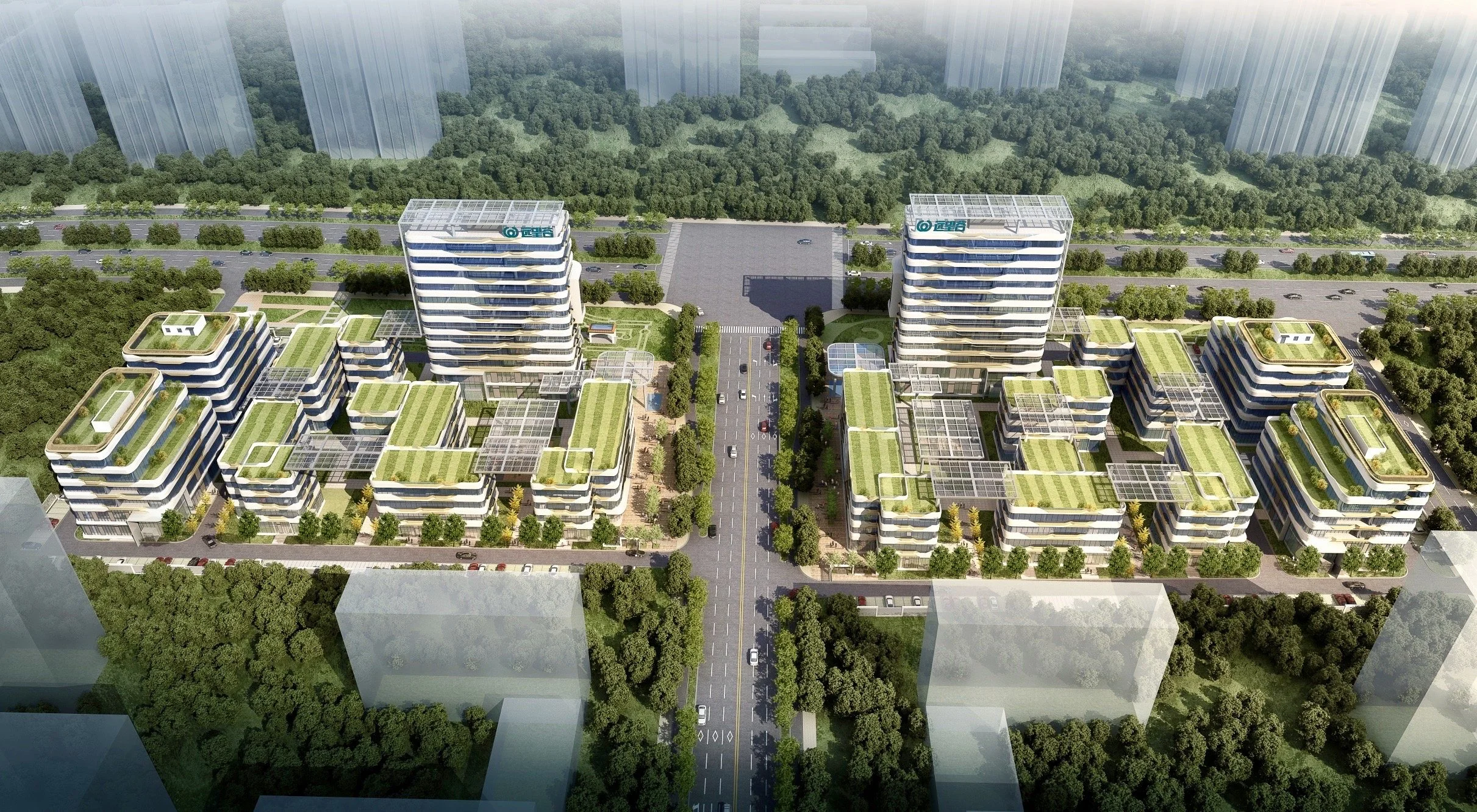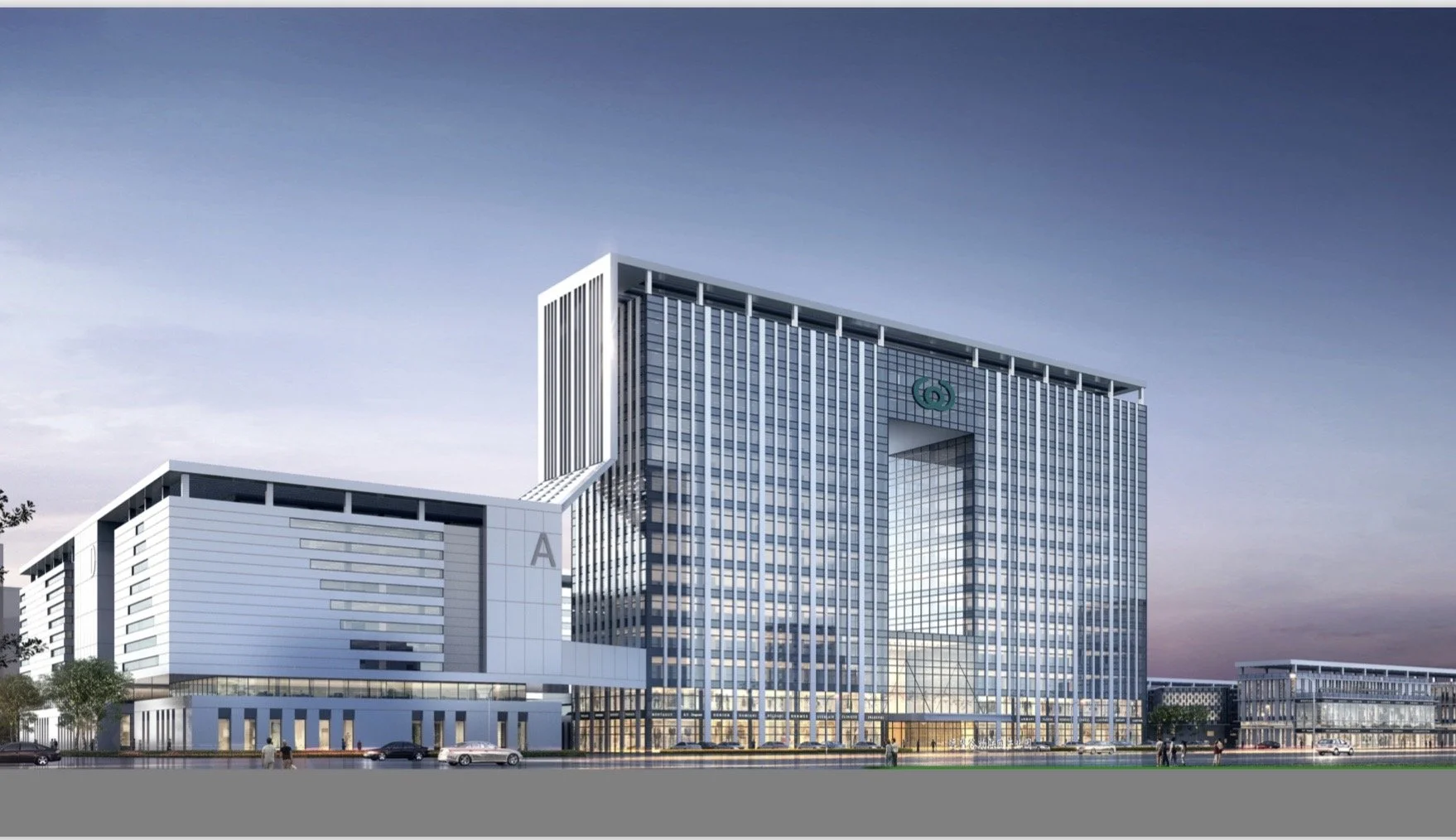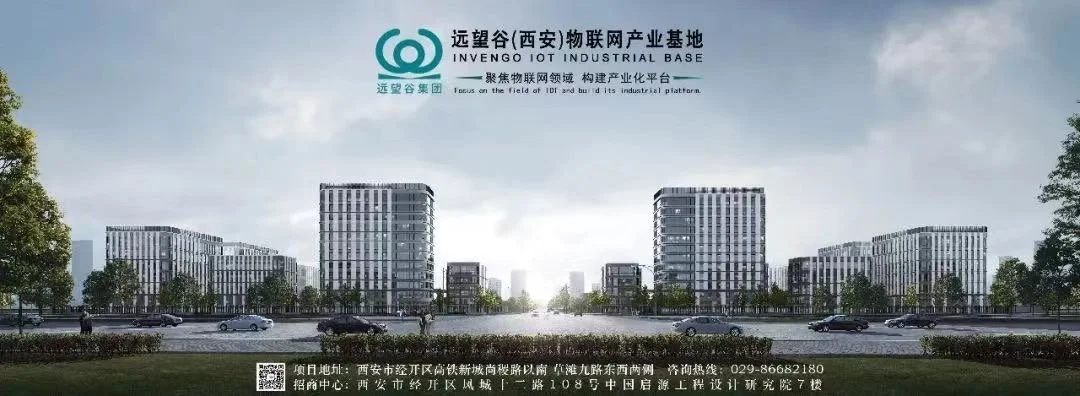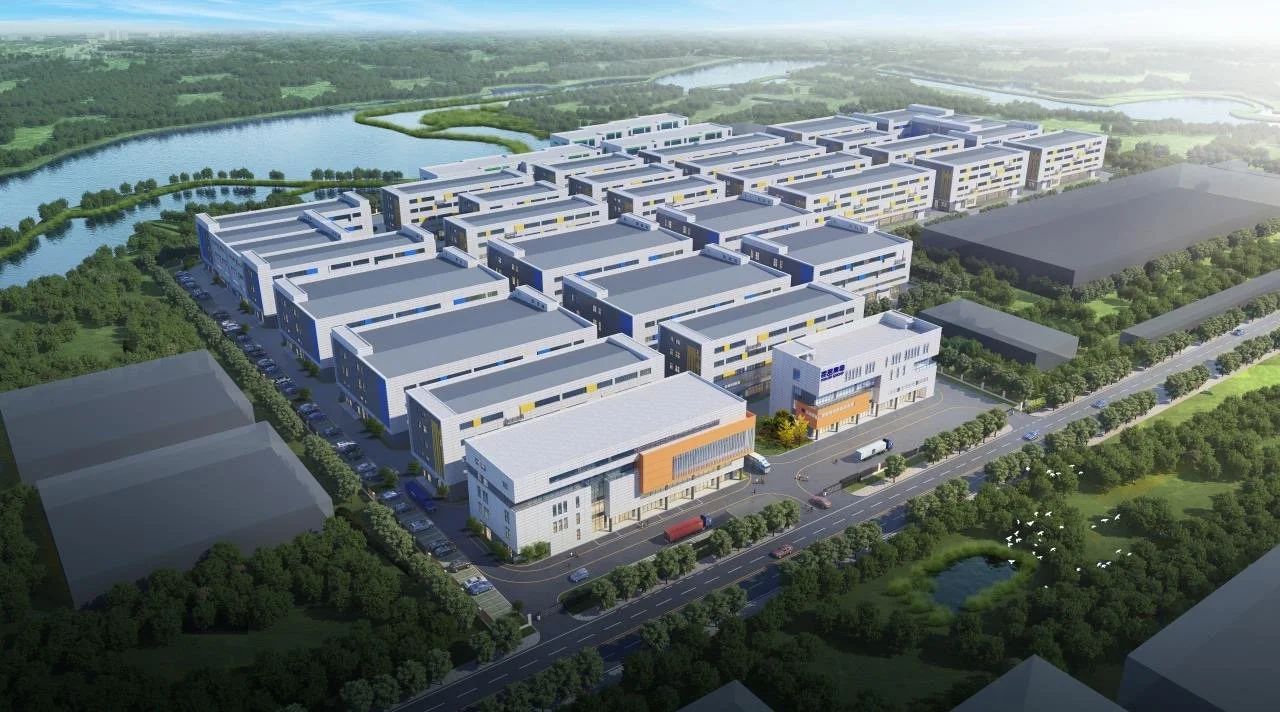Does Dostarlimab Really Cure Colorectal Cancer 100%?
In recent months, the miraculous efficacy of dostarlimab (Jemperli) has garnered widespread attention online, with some users claiming that the drug has achieved "100% cure for colorectal cancer" in the U.S.
Justin Lee 2025-01-22
In recent months, the miraculous efficacy of dostarlimab (Jemperli) has garnered widespread attention online, with some users claiming that the drug has achieved "cure for colorectal cancer" in the U.S. One user, identified as @Lawrenc09874431, even asserted that every patient taking this medication has been cured of colorectal cancer without the need for chemotherapy or surgery. Faced with such exciting claims, a friend reached out to me via WeChat for help. However, we cannot overlook the need for a thoughtful examination of such impressive yet unverified statements.
First, it is important to clarify that dostarlimab is neither a chemotherapy nor a radiotherapy drug; it is an antibody therapy, which we can generally understand as an immunotherapy drug. Initially developed by pharmaceutical company GSK, dostarlimab is a monoclonal antibody originally used for treating endometrial cancer, marketed as Jemperli. GSK has even established a dedicated website (jemperli.com), where many FAQs focus on endometrial cancer. As research progressed, scientists gradually discovered the drug's potential in treating other cancer types, particularly in certain gastrointestinal tumors, leading to recommendations for dostarlimab in treating colorectal cancer associated with DNA mismatch repair deficiency (MMR-D). This gradual process highlights the importance of continuously exploring and discovering new indications in pharmaceutical research.
It's worth emphasizing that clinical cases show a 100% efficacy and improvement rate of dostarlimab in specific colorectal cancer patients, but this situation is limited to certain individuals. In reality, dostarlimab targets patients with MMR-D colorectal cancer. In these patients, the drug effectively combats cancer cells by blocking the PD-1 pathway and activating the immune system. The success of this treatment strategy reflects the significance of personalized medicine. Therefore, to thoroughly understand the targeted use of this drug, one must grasp two technical terms: DNA mismatch repair and PD-1.
What is DNA mismatch repair (MMR-D)?
Simply put, DNA repair refers to the cellular response to DNA damage, which can restore the original structure of DNA and re-enable its functions. Cells can have different repair responses to various types of DNA damage. In mammalian cells, four relatively well-established DNA repair pathways have been identified, one of which is called DNA mismatch repair (MMR). The MMR system is a mechanism within cells designed to fix errors that occur during DNA replication. When this mechanism is defective, the genomic stability of the cell is compromised, leading to cancer. Tumor cells in MMR-D patients typically exhibit a high mutational burden, making them more recognizable and vulnerable to immune system attacks. Dostarlimab enhances immune function by participating in this process, potentially leading to significant improvements for some patients after treatment.
What is PD-1?
PD-1, or programmed death-1, is related to programmed cell death and apoptosis, referring to the orderly death of cells under genetic control to maintain environmental stability. Unlike cell necrosis, apoptosis is an active process involving a series of gene activations, expressions, and regulatory actions—it is not a pathological phenomenon but rather an adaptive death process for better environmental adaptation. PD-1 is an inhibitory immune checkpoint protein commonly expressed in T cells. Its primary function is to reduce immune responses and prevent autoimmune diseases. However, this mechanism is exploited by cancer cells in the tumor microenvironment to inhibit immune attacks. By blocking PD-1, dostarlimab lifts this suppression, allowing the patient's immune system to recognize and attack tumor cells again. Therefore, dostarlimab can have more pronounced therapeutic effects for MMR-D colorectal cancer patients.
In conclusion, dostarlimab indeed demonstrates powerful anticancer efficacy in certain populations, particularly in colorectal cancer patients with DNA mismatch repair deficiencies. However, this does not mean it can universally cure all late-stage colorectal cancer patients. Effective treatment requires precise patient selection; only individuals confirmed as MMR-D through current FDA-approved testing standards can receive effective treatment. Thus, patients should follow professional medical advice and make scientific and reasonable treatment choices to achieve optimal results. While dostarlimab is promising, it must be approached with caution and not seen as a panacea for the pursuit of a "cure."
Duesberg on AIDS
Today is World AIDS Day, and on this special day, we have to recall the denial and challenge of AIDS paradigm medical theory by a world-renowned molecular biology professor.
Justi Lee
Today is World AIDS Day, and on this special day, we have to recall the denial and challenge of AIDS paradigm medical theory by a world-renowned molecular biology professor.
Peter Duesberg, a molecular biologist and professor at the University of California, Berkeley, garnered significant attention in the 1980s and 1990s for his controversial stance on AIDS. Duesberg's assertions fundamentally challenge the prevailing view that the human immunodeficiency virus (HIV) is the primary cause of acquired immunodeficiency syndrome (AIDS). His arguments ignited heated debates and polarized opinions in both the scientific community and the public. Through the lens of the "5 Basic Objections" framework, this essay will explore Duesberg's critiques of the HIV/AIDS paradigm, the scientific responses to his claims, and the broader implications of his position.
Objection 1: Lack of Evidence Linking HIV to AIDS
Duesberg’s primary assertion is that there is insufficient evidence to conclusively link HIV to the development of AIDS. He argues that the correlation observed between HIV positivity and the onset of AIDS-related illnesses does not imply causation. Duesberg posits that AIDS may be the result of a combination of factors, including drug use, malnutrition, and exposure to various pathogens. He contends that epidemiological data supporting HIV as the causative agent is flawed and calls for a reevaluation of the evidence.
Counter-Argument
The majority of the scientific community, however, counters this claim with robust evidence supporting the HIV-AIDS link. Large-scale cohort studies and clinical research consistently demonstrate that HIV infection significantly increases the risk of developing AIDS. Numerous peer-reviewed studies have documented the progression from HIV to AIDS, illustrating the natural history of the disease. Furthermore, the successful implementation of antiretroviral therapy (ART) has shown a remarkable decline in AIDS-related morbidity and mortality among HIV-positive individuals, further substantiating the role of HIV as a causative agent.
Objection 2: Advocacy for Non-HIV Related Causes
Duesberg’s theory proposes that factors such as lifestyle choices, particularly drug use and poor nutrition, may be the primary contributors to AIDS. He argues that the immune system's deterioration is linked to these external influences rather than an infectious process initiated by HIV. This position points to the need for alternative explanations and solutions to combat AIDS.
Counter-Argument
Critics argue that by diverting attention away from HIV as the definitive cause of AIDS, Duesberg undermines public health efforts aimed at HIV prevention and treatment. The scientific community emphasizes the multifactorial nature of health, asserting that while social determinants and lifestyle factors undoubtedly play a role in health outcomes, this does not diminish the role of HIV as a critical factor in AIDS pathology. The integration of comprehensive care models that address both the infectious nature of HIV and the broader social influences is essential in tackling AIDS effectively.
Objection 3: Misinterpretation of Scientific Studies
Duesberg maintains that the scientific literature surrounding HIV and AIDS is plagued by bias and misinterpretation. He claims that researchers have failed to address alternative explanations for the data related to HIV infections and that this systematic bias obscures the truth about AIDS's real causes.
Counter-Argument
The response from the scientific community highlights the rigor of peer review and the reproducibility of findings in HIV research. Numerous studies, including those conducted under various methodological frameworks, consistently support the conclusions that identify HIV as the causative agent of AIDS. Moreover, the field of HIV/AIDS research is characterized by transparent and open discussions, which have undergone continuous scrutiny and validation, countering claims of biased interpretations.
Objection 4: Critique of Antiretroviral Therapy
Duesberg has been vocally critical of antiretroviral therapy (ART), equating it to a harmful intervention rather than a beneficial treatment for HIV-positive individuals. He raises concerns about the potential toxicity and side effects of these medications, asserting that they may contribute to immune system deterioration rather than bolster it.
Counter-Argument
Contrary to Duesberg's assertions, ART has been heralded as a breakthrough in the management of HIV/AIDS. Clinical trials illustrate that when taken as directed, ART can suppress viral load to undetectable levels, significantly reducing the risk of AIDS-related complications and transmission of the virus. The constructive critique of ART is essential in refining treatment protocols; however, dismissing the therapy outright undermines the evidence of its efficacy.
Objection 5: Ethical and Social Implications
Duesberg’s views have raised ethical concerns, particularly regarding how they influence public perception and policy surrounding HIV/AIDS. By propagating skepticism about HIV as a cause of AIDS, there is a potential risk of contributing to stigma against HIV-positive individuals and undermining public health initiatives.
Counter-Argument
The ethical obligation of the scientific community is to communicate transparently and accurately about health risks. Ensuring the widespread understanding of HIV as a determinant of AIDS is crucial not only for the health of individuals but also for the advancement of public health strategies aimed at combating the epidemic. The consolidation of scientific evidence reinforces the need for clear messaging that underscores the significance of prevention and treatment methods.
Conclusion
While Peter Duesberg's views on AIDS have sparked important discussions, the overwhelming body of scientific evidence supports the conclusion that HIV is the primary causative agent of AIDS. The complexities of the disease necessitate a multifaceted approach to treatment and prevention, yet the fundamental role of HIV cannot be disputed. It is imperative for the scientific community to uphold rigorous research standards and address conspiracy theories and misinformation that could potentially harm public health efforts in combating this devastating epidemic.
(It is worth noting that the University of Berkeley conducted a survey on his academic misconduct in 2009, but found that he was not responsible because the university believed that he had the right to publish those articles and did not judge the content of the study itself. In addition, I found that he co-published a paper with others in 2018. However, since 2010, the number of his research results seems to have decreased significantly. Considering that he is now 86 years old, this challenging academic insight on AIDS may no longer be succeeded under the suppression of paradigm science.)
The Impact of a Declining Chinese Economy on Its Industrial Real Estate Sector
The Chinese economy, once hailed as the world’s fastest-growing major economy, is facing significant challenges that are reverberating across various sectors. The slowdown, attributed to a multitude of factors including fluctuating demand, trade tensions, and an aging demographic, prompts critical examination of its implications, particularly on the industrial real estate sector.
In recent years, China emerged as the world's fastest-growing major economy. However, in 2024, its economy has significantly slowed, presenting major challenges across various sectors. This downturn is attributed to factors like decreasing global growth, trade protectionism, and geopolitical tensions, alongside a persistent decline in domestic real estate, slowed investment growth, demand fluctuations, trade conflicts, and an aging population. These issues have led to a critical examination of their effects, particularly on the industrial real estate sector. Given that industrial real estate encompasses warehouses, manufacturing plants, and logistics facilities, its performance serves as a key indicator of economic health. As China navigates these economic challenges, it is essential for stakeholders to understand the implications for this vital area.
As a global manufacturing powerhouse, China boasts a vast industrial real estate market, primarily fueled by its robust supply chain and export activities. However, the ongoing economic downturn poses significant challenges for the industrial real estate sector. It's essential for investors, businesses, and policymakers to grasp these changes to effectively navigate the upcoming obstacles. The decline in exports and domestic consumption has resulted in reduced demand for manufacturing space, prompting many industrial real estate developers to reassess their strategies. Additionally, as companies seek cost-efficiency, advancements in automation and smart technology have rendered some traditional industrial spaces obsolete, leading to higher vacancy rates.
Given these challenges, one might question if there's still potential for growth in the industrial real estate sector. While immediate optimism may be uncertain, the overall trend suggests a positive outlook. Firstly, the government's initiatives to promote economic rebalancing are underway, potentially creating new opportunities. China is gradually transitioning from an investment-driven growth model to a more balanced approach that emphasizes harnessing consumer potential—as highlighted by recent policies aimed at addressing the needs of an aging society—and the flourishing service industry.
In this context, industrial real estate is poised for a transformative opportunity. Companies must adapt to evolving consumer preferences by optimizing logistics chains and distribution networks. The rapid growth of e-commerce, for instance, has significantly increased demand for logistics infrastructure, offering numerous opportunities for industrial real estate stakeholders. To thrive in this shifting landscape, relevant parties should proactively adjust their strategies, seize these opportunities, and realign their business focus to meet the new logistics demands driven by e-commerce, enabling their own transformation and advancement.
Through these adaptive measures, the industrial real estate sector can align with new economic development trends while securing a competitive edge in a challenging market. Additionally, there are indications that China is strongly promoting and investing in green technology and sustainable practices across industries, including real estate. Developers are beginning to incorporate environmental protection initiatives into their projects, ensuring that this transformation aligns with broader sustainability requirements.
For stakeholders in the industrial real estate sector—including developers, investors, and tenants—it's essential to adjust strategies to keep pace with the evolving landscape. To mitigate current risks, developers must leverage innovative technologies to enhance operational efficiency and cut costs. This could involve reconfiguring existing spaces to accommodate new demands sparked by the e-commerce surge or investing in smart technologies that lower energy expenses and streamline logistics.
Investors should adopt a cautious yet optimistic approach, focusing on non-performing assets in emerging areas that still hold promise for long-term growth. Forming partnerships with local governments can facilitate knowledge sharing and improve access to resources, enabling investors to navigate current challenges while capitalizing on future opportunities.
In summary, while the ongoing decline of China's economy poses significant challenges to the industrial real estate sector, it also creates a foundation for transformation and innovation. By recognizing shifts in demand, embracing sustainable development, and implementing proactive strategies, stakeholders can weather economic fluctuations and seize new opportunities that arise as the market evolves. Thus, the industrial real estate industry finds itself at a crossroads, requiring continued attention and active preparation for the challenges ahead.
Hot topics Regarding IOT in 2024
In 2014, the Internet of Things (IoT) gained significant attention as an emerging technology with the potential to transform industries and daily life. Key hot topics included the vast expansion of connected devices, with estimates predicting billions of new smart gadgets coming online, thereby increasing the need for robust data management and security protocols.
Justin Lee
In 2014, the Internet of Things (IoT) gained significant attention as an emerging technology with the potential to transform industries and daily life. Key hot topics included the vast expansion of connected devices, with estimates predicting billions of new smart gadgets coming online, thereby increasing the need for robust data management and security protocols. The integration of artificial intelligence and the Internet of Things brought about by the rapid development of AI and other technologies; Discussions centered on interoperability challenges between devices and platforms, as diverse manufacturers began to compete for market share. Additionally, the emergence of smart cities highlighted the potential for IoT in urban planning, traffic management, and public safety. Privacy concerns also became a focal point, as consumers grew wary of the data being collected by their connected devices, prompting calls for more transparent policies and regulations.
Rapid rise of connected devices
The IoT industry experienced significant and notable growth in the year 2024, largely fueled by the rapid rise of connected devices permeating both daily life and various industrial sectors. Billions of innovative devices utilizing advanced communication technologies contributed to the enhancement of smart home solutions, wearable technology, and comprehensive automation systems. This remarkable growth not only improved consumer experiences but also enabled extensive real-time data collection and thorough analysis, resulting in better operational efficiency and more informed decision-making processes. However, the increasing adoption of these interconnected devices raised important cybersecurity and data privacy concerns, which in turn led to essential advancements in protective measures and the development of more rigorous regulations to safeguard users.
The integration of artificial intelligence and the Internet of Things
By cleverly integrating AI algorithms into Internet of Things devices, these devices are like having their own brains, which can directly process and analyze data without the need to transmit data, which greatly reduces the transmission delay and makes the response speed faster! For example, those intelligent security cameras can now analyze surveillance videos in real time, just like detectives, quickly identify any abnormal situation and make security guarding easier.
Moreover, the massive amount of data collected by Internet of Things devices will be transmitted to the cloud platform. There, deep learning and big data analysis, two super powerful "brains", will carefully process and analyze them, just like a super smart magician, turning these data into valuable information and knowledge to achieve more intelligent management!
Especially in the field of intelligent manufacturing, cloud AI is like a super commander, which can optimize the production process and make the whole production process smoother and more efficient. It can also predict the maintenance needs of the equipment, just like a thoughtful little assistant, telling us in advance that the equipment may need maintenance or repair, so as to avoid affecting the production progress due to equipment failure!
Discussions centered on interoperability challenges
Discussions in 2024 regarding interoperability challenges within the IoT industry highlight the ongoing struggle to create seamless integration among diverse devices and platforms. As the number of connected devices continues to grow, stakeholders face significant obstacles related to varying communication protocols, data formats, and security standards. These challenges hinder effective data exchange and collaboration between IoT systems, leading to inefficiencies and increased operational costs. Industry leaders emphasize the importance of developing standardized frameworks and protocols that can accommodate the varied ecosystems while ensuring data privacy and security. Collaborative efforts among manufacturers, software developers, and regulatory bodies are critical to overcoming these interoperability issues and unlocking the full potential of IoT solutions.
the emergence of smart cities highlighted the potential for IoT in urban planning
The emergence of smart cities in 2024 highlights the transformative potential of the Internet of Things (IoT) in urban planning. As municipalities increasingly integrate IoT technologies, they create interconnected systems that enhance urban living by improving efficiency, sustainability, and public services. Smart sensors and devices, embedded in infrastructure, allow for real-time data collection on traffic patterns, energy usage, and resource management, enabling city planners to make informed decisions that respond to the dynamic needs of residents. This integration not only promotes environmental stewardship through optimized resource consumption but also fosters economic growth by attracting tech-savvy businesses and enhancing the overall quality of life for citizens. As cities continue to evolve, the role of IoT in shaping resilient, responsive urban environments becomes increasingly critical.
consumers growing wary of the data
In 2024, consumers are increasingly wary of the vast amounts of data being collected by their connected devices, raising significant concerns about privacy and security. As smart technology becomes more integrated into daily life, individuals are demanding greater transparency regarding how their information is utilized and shared. This growing unease has prompted calls for more stringent policies and regulations governing data collection practices in the Internet of Things (IoT) sector. Consumers seek assurances that their personal data will be safeguarded and used ethically, pushing policymakers to establish clearer guidelines that prioritize user consent and accountability in data management.
Justin's Shared Docs is a platform presenting Justin Duman Lee's public files, primarily focused on professional topics such as strategy, management, and marketing within the sectors of industrial estates, IoT, and life sciences. In addition to work-related documents, the collection includes personal narratives, offering insights into both his professional expertise and personal experiences.
Main factors that affect the performance of We-media marketing
The main factors that significantly contribute to the promotion and enhancement of the overall performance of We-media marketing include several vital elements, namely content quality, audience engagement, and platform optimization.
Justin Lee
In this era of information explosion, we-media marketing has become an important channel for brand promotion and audience interaction. However, how to stand out among many we-media accounts and maximize the marketing effect is a common challenge faced by many enterprises and individual creators.
The main factors affecting the effect of we-media marketing include content quality, audience participation, platform optimization, release consistency, data analysis, cooperation strategy, search engine optimization (SEO) and value provision.
A. Content quality: the core of We-media marketing
High-quality content is the cornerstone of the success of We-media marketing. The content should not only be in-depth, but also closely related to the needs and interests of the target audience. In the context of information overload, only those contents that can resonate strongly with the audience can attract their attention and then turn them into loyal customers.
1. Depth and correlation
Depth means that the content must have unique insights and rich information, which can solve the actual problems of the audience or satisfy their curiosity. Relevance requires the content to closely fit the interests and concerns of the audience to ensure the accuracy and effectiveness of information communication.
2. Originality and innovation
Originality is the guarantee of content quality and the key to building brand credibility. Plagiarized or infringing content not only harms the rights and interests of creators, but also reduces the audience's trust in the brand. Therefore, insisting on originality and continuous innovation is an indispensable part of self-media marketing.
3. Diversified content forms
In addition to traditional text content, you can also try video, audio, charts, animation and other forms to meet the preferences and needs of different audiences. Diversified content forms can not only improve the participation of the audience, but also enhance the attractiveness and influence of the brand.
B. Audience participation: the key to building community awareness
Audience participation is one of the important indicators to measure the effectiveness of self-media marketing. Attracting audience participation through interactive elements can cultivate fans' community awareness and loyalty, thereby promoting the wide dissemination of content.
1. Interactive elements
Voting, commenting, live broadcast and other interactive elements are important means to improve audience participation. These elements can not only stimulate the audience's enthusiasm for participation, but also provide valuable feedback and suggestions for creators to help optimize content strategies.
2. Community construction
By regularly holding online activities, sharing meetings and other ways, the communication and interaction between fans can be strengthened and a close community atmosphere can be formed. This kind of community awareness can not only improve the loyalty of the audience, but also bring continuous traffic and exposure to the brand.
3. User-generated content (UGC)
Encouraging the audience to generate content, such as sharing their own stories, experiences or ideas, can further stimulate the audience's enthusiasm for participation and increase the diversity and richness of the content.
C. Platform optimization: ensure maximum visibility
Different platforms have different algorithms and rules. Therefore, optimizing content for specific platforms is the key to achieving maximum visibility and coverage.
1. Understand the platform algorithm
In-depth study of the algorithm mechanism of each platform and understand which factors will affect the ranking and exposure of content is the prerequisite for formulating optimization strategies.
2. Follow the best practices
Formulate content strategies that meet the best practices according to the characteristics of the platform and the preferences of the audience. For example, on the short video platform, we pay more attention to the interest and creativity of the content; on the graphic and text platform, we pay more attention to the depth and readability of the content.
3. Cross-platform integration
Integrate and link the content of different platforms to form a unified brand image and communication strategy. Through cross-platform promotion, the coverage and influence of content can be expanded.
D. Release consistency: the cornerstone of building brand loyalty
Regular content release helps to build a loyal audience and keep the brand in the lead. The consistency of the release not only requires the stability of the frequency and quantity of the content, but also requires the consistency of the style and theme of the content.
1. Make a release plan
Formulate a scientific release plan according to the active time of the audience and the traffic laws of the platform. Make sure that the content is released at the best time to get maximum exposure and interaction.
2. Keep the style consistent
The style and theme of the content should be consistent with the positioning of the brand and the preferences of the audience. Through a unified visual style and language style, the recognition and memory points of the brand can be strengthened.
3. Flexible adjustment strategy
Although release consistency is important, the strategy should also be flexibly adjusted according to the actual situation. For example, during major festivals or hot events, the frequency and interactivity of content can be appropriately increased to attract more attention from the audience.
E. Data analysis: the basis for accurately adjusting the strategy
Using analytical tools to monitor performance indicators, you can understand what content can resonate with the audience and adjust the strategy accordingly. Data analysis is an indispensable part of self-media marketing.
1. Monitor key indicators
Pay attention to key indicators such as reading volume, likes, comments, retweets, etc. to understand the popularity and dissemination effect of the content.
2. Analyze the behavior of the audience
Through the audience's behavioral data, such as browsing time, click rate, bounce rate, etc., analyze the preferences and needs of the audience and provide direction for content creation.
3. Optimize the content strategy
Adjust the content strategy in time according to the results of data analysis. For example, for popular content types, their release frequency can be increased; for ineffective content types, they can be optimized or replaced.
F. Cooperation strategy: an effective way to expand influence
Cooperation with influential people or other brands can expand the influence and credibility of self-media accounts and introduce content to new audiences.
1. Find a partner
Find suitable partners according to the brand's positioning and audience preferences. These partners can be opinion leaders, well-known bloggers or related brands in the industry.
2. Formulate a cooperation plan
Clarify the goal, content and form of cooperation, and formulate detailed cooperation plans. Ensure that both parties can benefit from each other and achieve a win-win situation.
3. Track the effect of cooperation
After cooperation, track the effect of cooperation in time to understand the feedback and participation of the audience. Adjust the cooperation strategy and optimize the cooperation effect according to the results of the effect evaluation.
G. Search Engine Optimization (SEO): The key to improving natural traffic
Search engine optimization is an important means to improve the visibility of self-media content in search results. By optimizing elements such as keywords, titles and descriptions, it can attract the attention and clicks of more potential audiences.
1. Keyword optimization
In-depth study of the search habits and keyword needs of the target audience, and integrate relevant keywords into the title, body and label of the content. Ensure that the content can get high ranking and exposure in search engines.
2. Title and description optimization
Titles and descriptions are the key elements to attract audience clicks. Through concise and attractive titles and descriptions, it can stimulate the curiosity and interest of the audience and improve the click rate and conversion rate.
3. Internal links and external links
Through internal links and external links, the relevant content is connected to form a complete content system. This can not only improve the browsing experience of the audience, but also improve the weight and ranking of the content.
H. Value provision: the key to enhancing loyalty
Providing value through educational resources, exclusive offers, etc. can enhance the loyalty of the audience and encourage them to share content. Value provision is an indispensable part of self-media marketing.
1. Educational resources
Providing brand-related educational resources, such as industry reports, white papers, tutorials, etc., can enhance the audience's awareness and trust in the brand. These resources can not only help the audience solve problems, but also enhance the authority and influence of the brand.
2. Exclusive discount
By providing exclusive offers or limited-time discounts, it can stimulate the audience's desire to buy and loyalty. These discounts can not only attract the attention of new audiences, but also promote the repurchase and word-of-mouth dissemination of existing audiences.
3. Membership services
Providing membership services to loyal audiences, such as exclusive content, priority participation in activities, etc., can further enhance their loyalty and sense of belonging. Through membership services, closer and more stable audience relationships can be established.
The success of self-media marketing is not achieved overnight, but requires multi-faceted efforts and strategic cooperation. Factors such as content quality, audience participation, platform optimization, release consistency, data analysis, cooperation strategy, search engine optimization and value provision together constitute a strong and effective framework, laying the foundation for a successful self-media marketing strategy. Under the guidance of this framework, enterprises and individual creators can more accurately locate the target audience, formulate content strategies that meet their needs and preferences, and maximize the effect of self-media marketing through continuous optimization and adjustment.
In the future self-media marketing, with the continuous progress of technology and the changing needs of the audience, we also need to constantly explore and innovate new strategies and methods. Only by constantly adapting to changes can we stand out in the increasingly competitive digital environment and achieve the sustainable development of self-media marketing.
Why do small enterprises or individual enterprises tend to have higher profit margins than large enterprises?
Justin Lee
Nowadays, a huge listed company may have a net profit of only a few million or even less than one million a year; and many small business owners claim that they are making money every day, and their annual net profit is not inferior to that of the listed companies mentioned above. Why is this?
Differences in cost structure
Fixed cost: Small enterprises or individual enterprises are usually small in scale, and fixed costs (such as rent, equipment, cost per person, etc.) are relatively low. This means that at the same income level, the proportion of profits of small enterprises or individual enterprises will be higher.
Operational efficiency: Small enterprises or individual enterprises are often more flexible and can quickly adjust production or business strategies to control costs more effectively. In addition, due to their small scale, they may be easier to achieve refined management, reduce waste and improve operational efficiency.
Market positioning and product differentiation
High-end market positioning: Some small enterprises or individual enterprises may focus on the high-end market and provide high-quality, high-value-added products or services. These products or services tend to be sold at a higher price, resulting in higher profit margins.
Product differentiation: Small enterprises or individual enterprises are usually more likely to achieve product differentiation and attract consumers through unique designs, functions or services. This differentiation strategy helps to improve the price and profit margin of products.
Price strategy and profit margin
High-price strategy: In the start-up stage, in order to quickly accumulate capital and build brand awareness, small enterprises or individual enterprises may adopt high-price strategies. This strategy will help improve the profit margin in the short term.
Profit margin: Due to the small size of small enterprises or individual enterprises, they may be more likely to occupy an advantageous position in the supply chain, thus obtaining higher profit margins. For example, they may establish more special cooperative relationships with suppliers and get more favorable purchase prices.
The impact of taxes and regulations
Tax incentives: In order to encourage entrepreneurship and the development of small and medium-sized enterprises, the government usually provides tax incentives. These policies help to reduce the tax burden of small enterprises or individual enterprises, thus improving profit margins.
Regulatory flexibility: Small enterprises or individual enterprises may be more flexible in complying with regulations. For example, it may be easier for them to adjust their business strategies to adapt to changes in regulations, thus avoiding additional costs.
Competitive environment and market position
Competitive pressure: Compared with large enterprises, small enterprises or individual enterprises may face less competitive pressure. In some market segments or specific areas, small enterprises or individual enterprises may have unique competitive advantages, making it easier to obtain high profit margins.
Market position: With the development of the market and the continuous changes in consumer demand, it may be easier for small enterprises or individual enterprises to seize market opportunities and quickly respond to consumer needs, so as to occupy a favorable market position and obtain high profit margins.
It is worth noting that the above advantages do not exist absolutely, and with the changes in the market environment and the development of the enterprise itself, these advantages may gradually weaken or disappear.
The Dynamics of Product Pricing and Profit Strategies in Enterprises
In the contemporary business environment, there exists a striking differentiation in profit margins between smaller enterprises, such as small businesses and individual ventures, and larger corporations. This disparity prompts a critical examination of the underlying factors that allow smaller firms to consistently enjoy higher profit margins than their larger counterparts.
Justin Lee
In the contemporary business environment, there exists a striking differentiation in profit margins between smaller enterprises, such as small businesses and individual ventures, and larger corporations. This disparity prompts a critical examination of the underlying factors that allow smaller firms to consistently enjoy higher profit margins than their larger counterparts.
Reasons for Higher Profit Margins in Smaller Enterprises
One of the foremost reasons small or individual enterprises can achieve greater profitability is attributed to their lower fixed costs. These businesses often operate on a smaller scale, leading to reduced expenses associated with rent, equipment, and personnel. Consequently, with a similar income level, the profit share for small firms can be significantly greater than that of larger corporations, which must contend with a more extensive cost structure.
Operational efficiency also plays a pivotal role in enhancing profit margins for small businesses. Their inherent flexibility allows for rapid adjustments in production or business strategies, which can lead to better cost management. Smaller organizations often find it easier to implement refined management practices, thereby minimizing waste and optimizing workflow. This efficiency translates into increased profitability.
Moreover, many small enterprises strategically position themselves in high-end market segments, providing exceptional, value-added products or services. Such positioning enables them to charge premium prices, thus achieving elevated profit margins. These firms often leverage product differentiation more effectively than larger companies, employing unique designs, features, or services to captivate consumers and justify higher prices.
In the early phases of their establishment, small businesses may adopt high pricing strategies, aiming to build brand awareness and quickly accumulate capital. This tactic not only boosts immediate profit margins but may also allow smaller firms to secure advantageous positions within supply chains, fostering better procurement pricing through specialized supplier relationships.
Tax incentives and regulatory flexibility also contribute to the profitability of small enterprises. Governments often encourage entrepreneurial activity through various tax breaks, thereby alleviating the financial burden on smaller businesses. Furthermore, the ability to more easily adapt to regulatory changes can provide small businesses with additional cost-saving advantages, enhancing profitability.
Lastly, the competitive environment plays a crucial role in shaping the profit landscape for small enterprises. In certain niches or less saturated markets, smaller players may experience reduced competitive pressures, capitalizing on unique advantages that allow for high profit margins. Their ability to swiftly respond to market changes and consumer demands further empowers them in achieving superior profitability.
The Path to Profitability through High-End Products
In exploring the viability of high-end products as a profit model for small businesses, it is essential to recognize that entering this market segment does present challenges. High-end consumers exhibit a preference for quality and service, readily paying premium prices, thus ensuring robust and stable demand. The potential for substantial profit margins exists in these segments, provided that businesses can effectively penetrate the market.
However, the pursuit of high-end market positioning often requires considerable investment in research and development, raw materials, and marketing, which may impose financial strain on businesses with limited capital. Furthermore, the competitive landscape in the high-end market is formidable, as established brands tend to dominate, leaving small enterprises at a disadvantage in resources and recognition. The challenge of attracting high-end customers, who are discerning and selective, complicates the strategy further.
Successful small businesses in the high-end market typically exhibit defining characteristics: a strong product positioning that distinguishes them from competitors, a commitment to exceptional quality and customer service, and precise marketing strategies that effectively identify and engage target consumer groups.
Balancing Fast Money with Sustainable Growth
Amidst the pursuit of profits, small businesses often grapple with the dilemma of whether to prioritize quick returns or gradual, sustainable growth. Strategies aimed at achieving rapid profitability—such as high pricing—can yield immediate financial benefits but may pose risks in terms of long-term sustainability. Conversely, strategies emphasizing small profits and volume-based sales promote steady growth but may not capitalize on high-margin opportunities.
Successful entrepreneurs recognize the importance of balance in their approach. While high profit margins may initially provide the necessary capital to establish a firm, transitioning to a model of small profits with rapid sales can facilitate broader market penetration and increased customer loyalty over time. Achieving harmony between these approaches requires innovation and a continued focus on differentiating products and services.
Adaptation Across Development Stages
Every enterprise must navigate various developmental phases, each necessitating distinct pricing and profit strategies. During the initial accumulation stage, high pricing can facilitate rapid capital accumulation. As firms mature, they may shift to low-margin, high-volume strategies to capture market share and build brand recognition. Eventually, organizations need to develop comprehensive systems surrounding product offerings and pricing to maximize profitability across diverse consumer segments.
In conclusion, successful enterprises adopt various pricing and profit strategies to adapt to their evolving market landscapes and internal growth trajectories. The astute selection of these strategies—guided by thorough market analysis and an understanding of consumer behavior—positions small and individual enterprises for enduring success amidst the complexities of the business world.
Seek a balance between short-term economic benefits and long-term brand maintenance during the economic downturn
During the economic downturn, enterprises temporarily weaken the high-end product brand, and instead launch the low-end product brand to adapt to the sluggish market demand, this strategy seeks a balance between short-term economic interests and long-term brand maintenance, which has multiple important implications.
First, to achieve short-term economic benefits
Justin Lee
During the economic downturn, enterprises temporarily weaken the high-end product brand, and instead launch the low-end product brand to adapt to the sluggish market demand, this strategy seeks a balance between short-term economic interests and long-term brand maintenance, which has multiple important implications.
First, to achieve short-term economic benefits
Meeting market demand: During an economic downturn, consumers have less purchasing power and become more price sensitive. The launch of low-end product brands can quickly respond to changes in market demand and attract consumers with more affordable prices, thereby expanding market share and achieving short-term sales growth.
Ease operating pressure: low-end products usually have the characteristics of lower cost and faster turnover. By launching such products, enterprises can quickly withdraw funds, relieve operating pressure, and provide financial support for the stable operation of enterprises.
Second, maintain the reputation of high-end brands
Avoid excessive consumption of brand image: During the economic downturn, if you forcibly maintain the marketing and sales of high-end product brands, it may lead to inventory backlog, price war and other problems due to insufficient market demand, which will damage the brand image. Temporarily weakening the high-end brand can reduce such risks and protect the brand image from excessive consumption.
Focus on core customers: Although the market promotion of high-end brands is temporarily weakened, enterprises can continue to maintain a good relationship with high-end customers through precision marketing, personalized services and other ways. This helps maintain the reputation of mid-to-high-end brands and lays the foundation for brand revival after the market recovers.
Third, retain the loyalty of high-end customers
Enhance customer stickiness: Mid-to-high-end customers usually have high brand loyalty and purchasing power. By providing high-quality after-sales service and exclusive benefits to members, enterprises can enhance the stickiness with these customers, so that they can still maintain their brand attention and trust during the economic downturn.
Prepare for future market recoveries: Economic downturns are temporary and markets always recover. Retaining the loyalty of middle and high-end customers means that enterprises will have a stable customer base and strong market competitiveness when the market recovers. This will help companies recover quickly and expand market share to achieve long-term sustainable development.
Fourth, comprehensive strategy suggestions
Clear brand positioning: enterprises need to clearly define the positioning and target market of the high-end product brand and the low-end product brand. Ensure that the two in the brand image, product quality, price strategy and other aspects of the formation of an effective distinction to avoid internal competition.
Adjust marketing strategy flexibly: Adjust marketing strategy flexibly according to market changes. For middle and low-end product brands, more direct and effective promotion means can be used to attract consumers; For medium and high-end product brands, more attention is paid to the improvement of quality and service experience to maintain brand image and customer loyalty.
Strengthen customer relationship management: Establish a sound customer relationship management system to strengthen communication and interaction with customers. By collecting customer feedback and providing personalized services, we can enhance customer satisfaction and loyalty and lay a solid foundation for the long-term development of enterprises.
To sum up, enterprises temporarily weaken the high-end product brand, launch the low-end product brand to adapt to the sluggish market demand, this strategy to seek a balance between short-term economic interests and long-term brand maintenance, has multiple important significance. However, companies also need to define brand positioning, flexibly adjust marketing strategies and strengthen customer relationship management to ensure the smooth implementation of strategies and maximize long-term results.
Summary of investment attraction strategies
Justin Lee
Leaders personally attract investment methods.
The ability, level, credibility and charisma of government leaders are important guarantees of foreign investment confidence, and the first element, first image and first attraction of a regional investment environment.
Therefore, in the investment attraction work, especially in the important stage of seeking breakthroughs, government leaders at all levels should be both commanders and soldiers, blow the charge horn and build river bridges, so as to personally meet important merchants, negotiate major projects in person, coordinate major issues in person, and accompany major inspection groups in person, which is to create a The key to the new situation of regional open economy.
[Case] The rapid development of Kunshan City's use of foreign capital has put great pressure on neighboring Wujiang County. However, after the new secretary of the county party committee of Wujiang County took office, they attached great importance to the work of attracting investment. They broke the cauldron and sank the boat, and fought against the water. Important foreign businessmen came. Four groups in the county received high-standard reception, and if there were any problems with the merchants, the main leaders of the county came forward to solve some problems, which deeply moved the foreign businessmen and invested in Wujiang's letter My heart is greatly increased. Now the county's investment attraction is developing rapidly, and it has a high and low momentum compared with Kunshan.
Sincere investment attraction method
The key to attracting investment depends on credibility, and only with credibility can we win the trust of merchants. Attract investment with sincerity",
Integrity is fundamental, and sincerity is the foundation.
Therefore, in the process of attracting investment, both leaders and investment attraction personnel should really stand on the perspective of investors, think differently, think about investors, help investors make profits, help investors succeed, serve investors, and achieve sincerity, sincerity, enthusiasm, perseverance and care, and exchange true feelings for true intentions. Build personality with integrity, establish a good cooperation relationship with investors, and move investors with your own true feelings.
[Case] Taiwan Unification Group was also introduced with "five hearts and true feelings". The group originally planned to take Wuhan as the investment focus of Central China. In order to change its original intention, the leaders of the district party committee and the district government in the suburbs of Nanchang City and the investment personnel spent nearly two years in uninterrupted emotional contact with the senior managers of the unified group.
Once during the Spring Festival, several of the main leaders of the district government braved the heavy snow and endured hunger and cold. They bumped on the road for more than 7 hours and went to Wuhan to pay New Year's greetings to the managers of the Unification Group.
When they arrived at the unified enterprise, the company was already off work, and they did their best to find Taiwanese businessmen to send New Year's greetings and greetings. Taiwanese businessmen were deeply moved by their true feelings and felt sorry for not to invest in Nanchang. Finally, they decided to invest in Nanchang Ying Science and Technology Park to set up a factory.
The investment attraction method of old project extending and expanding
We attach great importance to and give full play to the cluster radiation link effect of "doing a good job to bring a piece" to attract investment, provide sincere, sincere and timely service to the settled investment projects, solve problems, and promote their success.
Establish the real image of "many opportunities and high success rate" and launch the entrepreneurial brand of "low cost, fast return, high efficiency and good reputation".
Comprehensively and timely understand and master the global development strategic planning and strategy of settled investment enterprises, take the initiative to create conditions to attract with advantages, promote the extension, expansion and improvement of their new projects, new products and new technologies in the local area, and accelerate the industrial chainization and baseization of investment projects.
[Case] Successive municipal party committees and municipal governments of Xinyu City attach great importance to cooperation with Shanghai Huayuan Group Company, and have formed working groups to go to Shanghai to negotiate with Huayuan Group many times.
After the investment of the group, the Xinyu Municipal Party Committee and the municipal government have made every way to provide efficient and high-quality services to help enterprises succeed. After the overall acquisition and reorganization of Xinyu Textile Company, the company decided to invest in the operation of the China Carpet Industrial Park project in Xinyu City and strive to become the largest production-scale enterprise in China.
Special focus on investment attraction method
It is necessary not only to hold an investment promotion meeting to establish an image and expand its influence, but also to combine the cultivation and expansion of pillar industries, core technologies and cultivation of advantages, clarify the main targets, and take the initiative to attract investment with specific projects and negotiation plans.
On the basis of mastering the investment psychology of investors, we should make full use of the conditions and advantages, carry forward the "fourty thousand" spirit of mountains and rivers, thousands of words, thousands of hardships and all kinds of ways, and the "four skins" spirit of hard-skinned, cheeky, grinding mouths, and running through heels, and highlight the "four skins that have settled in mainland China Large companies focus on attracting investment.
[Case] In order to form the industrial advantages of the air conditioning production base as soon as possible, Nanchang Economic and Technological Development Zone, on the basis of careful research and in-depth analysis, focuses on well-known domestic air conditioning manufacturing enterprises such as Greencol, Ke⻰, Oaks, etc., formulates feasible projects and negotiation plans, and organizes forces to carry out Business.
After learning that the negotiation of an investment project between Ningbo Samsung Oaks Group and ⻓Sha was temporarily interrupted due to "SARS", Ms. Lu, the deputy director of the district, immediately brought her own transportation and brought her own dry food. At the risk of the "SARS" epidemic, she led the squad to take the initiative to attack, six times between Nanchang and Ningbo.
Her sincerity deeply moved the decision-makers of Oaks Group, and finally pushed the project to settle in Nanchang Economic and Technological Development Zone. Green Cole, Ke⻰ and other air conditioning manufacturers also adopt key investment methods. Now the air conditioning production base of Nanchang Economic and Technological Development Zone has begun to take shape.
Base-based investment attraction law in key areas
According to the characteristics of capital flows, the characteristics of Hong Kong, Macao and Taiwan capital flows, as well as the characteristics of investment flows in Japan, South Korea, Europe, the United States and Canada, determine the key areas, key areas and major strategies to attract investment, take advantage of the influence of the heavyweight projects that have been settled, make use of influential agents, and use the stationed Small detachment resident investment attraction and other forms, implement base-based and ⻓ phased investment attraction in key areas.
[Case] Yingtan City has sent more than 20 small teams to Guangdong, Fujian, Zhejiang and other places to attract investment. A small team is stationed in an area, focusing on a kind of project, and keeping an eye on several merchants. These small teams have brought in batch after batch of merchants, and have actually introduced more than 50 projects, with an investment of more than 1 billion yuan.
Pairing gradient undertaking investment attraction method
On the basis of mutual benefit, by establishing friendly and cooperative relations with developed regions, establishing a benefit-sharing mechanism, accelerating the docking and interaction with industries in developed regions, and actively striving for industrial gradient transformation.
At present, the investment cost of developed coastal areas is generally more than 20% higher than that of Jiang⻄, and the development space is limited. Some projects are difficult to continue. Therefore, some projects need to find new ways out in order to seek greater development.
[Case] Ganzhou City is close to Guangdong. After the highway is opened, the journey to Shenzhen and Guangzhou is only more than three hours. Taking advantage of the unique location advantage, Ganzhou City took the initiative to pair up and cooperate with Shenzhen and Guangzhou. On the basis of mutual benefit and benefit sharing, it signed an industrial gradient transfer cooperation agreement, which laid a good foundation for the formation of a "front store and a back workshop" in the future, and the project settled in Ganzhou.
The Law on Investment Promotion by Taking a temporary post in the targeted local Gov.
Send personnel to selectively go to areas, development zones and industrial parks with a strong trend of industrial gradient transfer and a high effect of attracting foreign investment to learn about the investment information of local enterprises and grasp first-hand information. Under the conditions of tacit understanding, mutual benefit and industrial division of labor between the two sides, they should work together. Strive to realize the project gradient transfer as soon as possible.
[Case] The Nanchang Wahaha project was successfully introduced using this method. In order to introduce the Wahaha project, under the direct promotion of the provincial and municipal leaders, the leaders of Shanhu District sincerely negotiated investment matters with them. On the other hand, they learned about the internal situation of Wahaha enterprises through the leaders of the Donghu District Party Committee who were suspended in Xiacheng District, Hangzhou City, where Wahaha Group was located at that time.
Based on the first-hand information obtained at the first time, the leaders and investment personnel of Shanhu District formulated negotiation plans in a targeted manner and carried out their work in a targeted manner. After a period of sincere exchange and communication, the leaders of the headquarters of Wahaha Group finally agreed to visit Nanchang, and the sincere spirit of the provincial and urban leaders was finally moved. The group leaders finally decided to invest in Nanchang, which changed their decision not to invest in the provincial capital city.
The method of attracting investment by telling the stories of former successful investment attracting
Focus on the appearance of successful investors in the region, and strive to attract more merchants to invest locally.
Hire powerful and influential people at home and abroad as investment consultants and investment agents to implement effective investment.
Hire representatives of large companies and enterprises at home and abroad in China as investment consultants or investment agents to carry out effective investment.
Implement limited authorization for investment consultants and investment agents and entrust them to attract investment. The focus is on providing us with investors' investment project information, investment strategic planning and the main consideration conditions for the selection of investment areas in a timely manner, etc., involving economic contracts, land and other specific economic activities, in order to prevent business risks and other The insurance is not authorized. It is necessary to reasonably solve the normal investment activity expenses of investment consultants and investment agents.
[Case] At the promotion meeting held by Ji'an in Guangdong and Fujian, merchants who have successfully invested in the local area were invited to introduce Ji'an, which received unexpected good results. 78 projects were signed in the two promotion meetings, and the contract attracted 4.6 billion yuan.
Xinyu City hired 21 businessmen as investment consultants, and the effect is also very good. Among them, the most typical are Mr. Qiu and Mr. Li, two investment consultants. They voluntarily invested 400,000 yuan to hold investment promotion meetings for the city in Zhuhai and Macao, and successfully introduced five projects such as Bolder Park and Hong Kong Zhanhui.
The end
Summary of investment attraction cases
Justin Lee
Jiangsu "Kunshan Model"
Basic introduction: Jiangsu Kunshan Economic and Technological Development Zone has created a "Kunshan model" to create an investment environment. Kunshan is a county-level city. There are nearly 3,000 foreign-invested enterprises in the city, which has formed a pocket effect and a basin effect to attract investment.
Kunshan Economic and Technological Development Zone was founded in 1985 and was approved as a national development zone in 1992, with a jurisdictional area of 120 square kilometers. Among the major economic index assessment of 54 national development zones in the country, Kunshan Development Zone ranks first in the comprehensive evaluation.
At present, foreign investors have invested and established more than 1,000 enterprises in Kunshan Development Zone, with a total investment of more than 10 billion US dollars.
Main experience and practice:
[Main experience]: Dare to be the first in the world, build nests and attract phoenixes, characteristic carriers, honest services and prompt officing, etc.; Service concept: pro-business, safe business, rich business;
[Specific practice]: In order to create a good development environment for foreign-funded enterprises, Kunshan Municipal Government and Kunshan Development Zone Management Committee in the city And create 5 brands in the whole region: improve the supporting environment of the industry and create "electronic Kunshan"; optimize the service environment and create "efficient Kunshan"; build an ecological environment and create a "green Kunshan"; create a legal environment and create a "safe Kunshan"; improve the humanistic environment and create a "charming Kunshan".
It has become the world's laptop production base, with an annual output of more than 10 million units, accounting for 1/3 of the world, and all parts are equipped within 70 kilometers. In the future, we will focus on developing three industrial groups: electronic information, precision machinery, and citizen necessities. Five advantages: location advantage (between Shanghai and Suzhou), cost advantage (rich labor), industrial chain. Advantages (low business cost, new competitiveness), service advantages (government services), ecological environment advantages (the fourth-level investment environment in the future).
The successful experience of Suzhou Industrial Park
Basic overview:
In 2020, the park achieved a regional gross domestic product of 290.7 billion yuan, a public budget revenue of 37.73 billion yuan, a total import and export of 94.18 billion US dollars, and the actual use of foreign capital was 1.97 billion US dollars, a record high. It achieved five consecutive championships in the national economic development zone ranking, and in the national high-tech zone ranking. Jumping to the fourth place, it has a strong comparative advantage in open development, industrial ecology, innovative ecology and business environment.
In the process of promoting the implementation of innovation drive and cultivating new momentum for development, the park adheres to the introduction and cultivation, and has accumulated a large number of science and technology enterprises. Up to now, there are more than 1,800 high-tech enterprises, 512 gazelle and gazelle cultivation enterprises at all levels, and 50 listed enterprises at home and abroad, among which, science and technology innovation Board 12 houses.
Successful experience:
1. Strive to build a management system and operation mechanism adapted to the development of the market economy, separate the middle and low-level functions in the government functions, and be undertaken by non-governmental public institutions or intermediaries, so as to effectively reduce the management level.
2. Create a high-quality environment suitable for human habitat and entrepreneurship.
3. Accelerate the improvement of international capital aggregation and regional core competitiveness, mainly developing semiconductor, optoelectronics and mechatronics.
4. Actively build an efficient, transparent, fair and standardized service-oriented government, put forward the concept of "pro-business" and implement "one-stop" service. 5. Adhere to the harmonious development of economy and society, people and nature.
Medical Points of View From PhD Jia
In general, leaders with such high risk should be aware of medical conditions, especially those at risk or hidden danger of heart disease. 一般来说,具有如此高风险的领导者应该注意健康状况,特别是那些有心脏病风险或隐患的人。
Hello! Everyone:
In general, leaders with such high risk should be aware of medical conditions, especially those at risk or hidden danger of heart disease.
You should live near a location with good medical conditions or convenient first aid, because there are many options in Shanghai, such as the West Suburb Hotel or the Hongqiao Reception Hotel, which is far better than the East Suburb Hotel.
Second, there are better hospitals in Puxi, just like the Zhongshan Hospital mentioned by Maoli just now. My teacher, Mr. Tang, is in Zhongshan Hospital. Zhongshan Hospital has two specialties, namely the liver department and the cardiovascular department, which rank first in China. Where are we going to stay when we become old?,I have always adhered to such a point of view, in the environment of China, it is not in the beautiful mountains and rivers. Therefore, I summarize this point to make a little reminding, just like children going to school, when they are young, their parents usually choose school districts to stay.Because China's medical resources are highly unbalanced, aged people should be living near the hospital with good medical conditions, I think this is very, very important.
I mentioned about the physical examination the day before yesterday, and I already talked about the imaging examination, including the magnetic resonance of the head, the CT of the chest, and the B-ultrasound of the abdomen. Including the thyroid, as well as pelvic cavity, these can be checked with B-ultrasound, then there is another important reminding about the examination is the gastrointestinal tract. This is very important, if you have never seen a doctor for a colonoscopy, then I recommend scheduling a colonoscopy as soon as possible. If it is examined and there is no inflammatory lesion, that is, the inflammation is limited to ordinary inflammation, such as chronic non-atrophic gastritis, or general inflammation of the intestine, then in this case, once every two to three years can be OK.
But in some cases, we will have some positive display, such as chronic atrophic gastritis, or ulcers, or polyps, how to deal with these cases? Special emphasis is on multiple polyps, multiple intestinal polyps or stomach polyps, when such polyps are found, the doctor will remove them under the microscope, and will do pathology, which is generally more benign. There are also malignant, there are many kinds of classification, this does not expand to say, then there are a small number of polyps, it is itself malignant. These conditions may require a colonoscopy followed by surgery to remove a section of the intestine, or a major gastrectomy. However, benign polyps, especially multiple polyps, are likely to become cancerous within two to three years, so we know that gastroenteroscopy is very important, if it is multiple polyps, In this case, the period of gastroenteroscopy will be shortened by one year to one and a half years, if it relapses, after two to three years, the chance of cancer is very large.
Of course, as long as it is found to be early, I said that day for early malignant tumor, one only needs to do a small operation, and then radiotherapy and chemotherapy are not necessary. The prognosis is no different from that of normal people, and the duration of life is not affected.
Inflammation, especially autoimmune inflammation, such as intestinal Crohn's disease, or ulcerative colitis, which is increasingly common in China. In fact, the incidence rate in China has always been not low, just because we have confused this inflammation with other inflammation in the past, and then there is the lack of some basic examinations in terms of examination methods. The treatment of such diseases is generally immune agents or hormone methods to treat, the effect is limited, so this kind of inflammatory disease should be paid attention to early. Because when you happen early, it is controllable, and if it spreads down, it is more troublesome.
This type of disease usually manifests as gastrointestinal discomfort, long-term, chronic, recurring discomfort, such as abdominal soiling, repeated diarrhea. Like blood in the stool. Of course, these are not specific symptoms, because hematochezia may be a tumor, there may be hemorrhoids, there may be acute bleeding of the gastrointestinal tract, etc., this is more complicated, that is, there are some abnormalities to be highly concerned about.
Long-term and repeated inflammation, most of the results are tumors, so we should pay attention to inflammation, so for example, some inflammation in our mouth, and this digestive tract, just mentioned gastrointestinal inflammation, and female genital tract inflammation, and male urethra ah, and birthmark inflammation.
The main way to avoid and reduce inflammation is to avoid contact with or eat things that stimulate inflammation, such as polluting substances, special diets, such as eating too many peppers, too much alcohol, and cigarettes, etc., which are common things that everyone knows, to avoid exposure as much as possible, and radiation, heavy metal intake, and so on.
So if there is inflammation, then the physical examination can detect it and observe the progression of its malignancy, if it has an early invasive change. The lesions can be removed, and in that case, serious adverse consequences can be prevented.
Let me talk about some small effective methods, for example, many people suffer from chronic pharyngitis, which is indeed difficult to treat clinically. However, in my personal experience, I have cured many people with one method, and it is effective in a very short time, so this is recommended to everyone, because the general physique of Chinese people is similar, the use of western drugs and antibiotics, as well as local spray, hormones, these are effective, but no longer effective.
The medicine I am talking about is a Chinese patent medicine that can be taken orally, called Gui Fu Di Huang Pill. If you want to read the instructions, it does not write what is effective for inflammation, it is mainly the treatment of kidney deficiency, Yin deficiency, and weak fire.
The other is rhinitis, my experience, the simple and effective method, but needing to insist on a period of time, is to wash nasal cavity with saline water, now there is a special nasal wash, it is easy to buy online, very cheap, and then once or twice a day, it is allergic rhinitis, Or some other infectious rhinitis and so on. My experience is very effective ah, also I recommend to everyone. in fact, some diseases do not have to use drugs method to treat.
There is the physical examination, genetic testing is actually unnecessary, genetic testing is currently the most useful thing actually after the illness, for us. When you get sick, some of its drugs, like targeted drug therapies, need to find the mutant strain of this gene, and then you have to do genetic testing. Other scenarios, such as saying that the high expression of a certain gene means a high risk of certain diseases, this logic exists, he just said that there is this risk, but if you do not happen, to worry about this matter is not necessarily a good thing, so we only need to pay enough attention to routine physical examination and use effective ways and methods to detect. You can detect what should be detected, there is no need to use that sounds lofty and actually does not make much sense to predict. So this genetic testing is a misunderstanding, in addition, is often after the physical examination to do some intervention, in terms of health intervention, the more expensive is mainly stem cells, then this stem cell is also unnecessary, now there are two meaningful points in the work of stem cells, the first is cell storage, if we worry about the future. What's going to happen, which is actually now or before now, is that we're going to store some bone marrow stem cells, or some other healthy cells from certain parts of the body, and then we're going to use them in the future, and what they're going to do, to be honest, is they're going to use them in the future, and that's the first point, and the second point is that individual diseases, It's treatable with stem cells, and it's basically limited to leukemia. This is a blood disease, including MDS and so on, will not expand to say. So, in general, if you need beauty, or life extension, you use stem cells, which are unreliable, and a lot of them are deceptive. What about the physical examination, I think it is about this, but each person, each individual, his physical condition is different, including what has happened, or potential, the future may happen. They are also different, so if you have any personal questions, you can ask me individually, and I will try to answer them. thank you!
What affects a person’s marketing promotion ability?
Justin Lee
Understanding the factors which affect a person's marketing promotion ability is important. These factors may be included as following:
1. Knowledge and Expertise: having a comprehensive understanding of your products, business sector, and industry is vital for effective marketing promotion work. It enables you to communicate your offerings effectively, identify your target audience accurately, differentiate your product, segment your market, and adapt to changing market dynamics, ultimately leading to excellent marketing outcomes.
2. Understanding marketing: A person's understanding of marketing principles, strategies, and tactics plays a significant role in their promotion ability. Having comprehensive knowledge and expertise in various marketing techniques enables them to develop effective promotional campaigns.
3. Creativity and Innovation: The ability to think creatively and come up with innovative promotional ideas can greatly enhance a person's marketing promotion ability. This includes designing attention-grabbing advertisements, crafting unique marketing messages, and exploring new platforms or channels for promotion.
4. Communication and Persuasion Skills: Effective communication skills are essential for conveying marketing messages to target audiences and persuading them to take desired actions. Strong interpersonal skills, including the ability to build relationships and influence others, contribute to successful marketing promotion.
5. Analytical and Research Abilities: Marketing promotion involves analyzing market trends, consumer behavior, and competitor strategies. Individuals with strong analytical and research abilities can gather relevant data, interpret it, and make informed decisions to optimize promotional efforts.
6. Adaptability and Flexibility: The marketing landscape is constantly evolving, so individuals with the ability to adapt and embrace change tend to excel in promotion. They can adjust strategies according to emerging trends, technological advancements, and changing consumer preferences.
7. Time Management and Organizational Skills: Effective promotion requires planning, organizing, and executing various tasks within defined timelines. People with strong time management and organizational skills can prioritize activities, meet deadlines, and ensure the smooth implementation of promotional campaigns.
8. Understanding Target Audience: Knowing the target audience's demographics, preferences, and needs is crucial for effective marketing promotion. The ability to understand and connect with the target audience increases the chances of creating impactful promotional strategies and messages.
9. Resources Management: Understanding government organization structure and functions, Efficiently allocating different kinds of resources from Gov., industry organizations and public relations can significantly impact marketing promotion ability. Knowing how to optimize resource utilization and leveraging available resources can enhance the effectiveness of promotional campaigns.
10. Emotional Intelligence: Being emotionally intelligent helps marketers understand and connect with customers on a deeper level. It enables them to empathize, build rapport, and create meaningful connections through marketing promotions.
11. Cultural Awareness and Diversity: Marketing promotions often target diverse audiences across various cultures and regions. Having an awareness and understanding of different cultural norms and values can help marketers tailor their promotions appropriately and avoid potential cultural missteps.
Ultimately, a person's marketing promotion ability is a combination of knowledge, skills, creativity, adaptability, and understanding of the market and target audience.
Negotiating with the government to obtain industrial lands
Justin D. Lee
Negotiating with the government to obtain industrial lands can be a complex process. Here are some steps you can follow to navigate the negotiation process:
1. Research and Preparation: Gather information about the available industrial lands, their locations, sizes, and suitability for your industry. Understand local zoning laws, regulations, and government policies related to land allocation. Assess your own needs in terms of land size, infrastructure requirements, and future expansion plans.
2. Build Relationships: Establish connections and relationships with relevant government officials, such as local authorities, economic development agencies, or land management departments. Attend public meetings, industry conferences, and networking events to engage with officials and demonstrate your interest in the local area.
3. Clearly Define Requirements: Clearly articulate your specific requirements for industrial lands. Prepare a detailed plan that outlines the purpose of the land, expected investment, job creation potential, and the positive impact your project can bring to the local economy.
4. Identify Potential Obstacles: Anticipate potential obstacles or challenges that may arise during the negotiation process. These could include competing interests for the same land, environmental concerns, infrastructure limitations, or legal issues. Develop strategies to address these challenges and find solutions that meet both your needs and government requirements.
5. Present a Compelling Proposal: Prepare a comprehensive proposal that showcases the benefits of your project. Highlight its potential for job creation, economic growth, and positive community impact. Emphasize your commitment to environmental sustainability and corporate social responsibility.
6. Negotiation Strategies: During negotiations, remain flexible while advocating for your interests. Be prepared to offer incentives, such as job training programs, infrastructure development, or partnerships with local businesses. Seek win-win solutions that align your goals with the government's objectives, such as regional economic growth or industrial development plans.
7. Legal and Financial Considerations: Ensure your negotiation strategy takes into account legal and financial aspects. Consult with legal professionals to review contracts, agreements, and compliance requirements. Prepare a comprehensive financial plan that covers land acquisition costs, construction expenses, ongoing operational costs, and potential incentives or tax benefits.
8. Patience and Persistence: Negotiating with the government may take time and involve multiple levels of approvals and bureaucratic processes. Be patient, persistent, and willing to engage in continued discussions and revisions to your proposal. Maintain open lines of communication with the government officials involved.
9. Seek Expert Assistance: If needed, engage the services of experienced consultants, lawyers, or real estate professionals with expertise in land negotiation processes. Their knowledge and connections can help streamline the negotiation process and increase the likelihood of a successful outcome.
Remember, negotiation is a collaborative process, and building trust and understanding with the government officials is vital to reaching a mutually beneficial agreement.
6-month consequences of COVID-19 in patients discharged from hospital: a cohort study
Lancet
Introduction
As of Jan 4, 2021, the global pandemic of COVID-19—an emerging infectious disease caused by SARS-CoV-2—has resulted in more than 83 million confirmed cases with more than 1·8 million deaths. The epidemiological and clinical characteristics, pathogenesis, and complications of patients with COVID-19 at acute phase have been explicitly described,but the long-term consequences of the illness remain largely unclear.
Long-term follow-up studies on persistent symptoms, and lung function, physical, and psychological problems of discharged patients are urgently required.
Only a few studies with small sample sizes have been published, with the longest follow-up duration being 3 months following discharge from hospital.
Some persisting symptoms such as fatigue and dyspnoea,impaired pulmonary function and chest image abnormalities were reported in patients following hospital discharge, but the full spectrum of post-discharge characteristics is still unknown. Furthermore, no studies have yet reported the extra-pulmonary organ manifestations that could persist after damage in acute stage or are newly onset after discharge.
We aimed to describe the long-term consequences of COVID-19 in patients after hospital discharge and identify the potential risk factors, including disease severity, associated with these consequences.
Background
The long-term health consequences of COVID-19 remain largely unclear. The aim of this study was to describe the long-term health consequences of patients with COVID-19 who have been discharged from hospital and investigate the associated risk factors, in particular disease severity.
Findings
At 6 months after acute infection, COVID-19 survivors were mainly troubled with fatigue or muscle weakness, sleep difficulties, and anxiety or depression. Patients who were more severely ill during their hospital stay had more severe impaired pulmonary diffusion capacities and abnormal chest imaging manifestations, and are the main target population for intervention of long-term recovery.
How ChatGPT Helps Medical Treatment?
ChatGPT 是一种人工智能技术,它使用自然语言处理来分析和理解人类对话。 ChatGPT 可以通过多种方式应用于医疗领域,例如改善患者体验、加强医疗咨询以及支持诊断和治疗过程。
Justin D. Lee
ChatGPT is an artificial intelligence technology that uses natural language processing to analyze and understand human conversation. ChatGPT can be useful in the field of medical treatment in various ways, such as improving patient experiences, enhancing medical consultation, and supporting the diagnosis and treatment process. Here are some of the ways ChatGPT helps medical treatment:
1. Improving Patient Experiences: ChatGPT can be utilized in medical centers and healthcare settings as a virtual assistant to improve patient experiences. Patients can converse with ChatGPT and obtain quick, personalized responses to their questions, which can help them feel more in control of their treatment and less overwhelmed by the medical process.
2. Enhancing Medical Consultation: ChatGPT can aid doctors and other medical professionals in their work by assisting in medical consultations. ChatGPT can be used to answer patient questions, provide relevant medical information, and suggest follow-up tests. This can help healthcare providers to be more efficient and effective in their work and allow them to focus on more complex cases.
3. Supporting the Diagnosis and Treatment Process: ChatGPT can be used to analyze data and generate insights that support the diagnosis and treatment process. By processing data from sources such as medical records, clinical databases, and medical literature, ChatGPT can help to identify patterns and trends that are critical to diagnosis and treatment. This can save valuable time in finding a diagnosis.
4. Providing Early Warning Signs: ChatGPT can track a patient's data over time and provide early warnings on any potential health risks to the patient or any changes in their health conditions. Such lead-up time can enable medical practitioners to provide early intervention and prevent extreme health issues.
Overall, ChatGPT has the potential to positively impact medical treatment by improving patient experiences, enhancing medical consultation, supporting the diagnosis and treatment process, and detecting potential early warning signs. However, it is important to acknowledge that AI technologies like ChatGPT are still developing and require extensive verification, validation, and training to be used in the healthcare industry.
The latest updates in unmanned driving
近年来,无人驾驶技术取得了重大进展,带动了该领域的许多有前景的发展。以下是无人驾驶领域的一些最激动人心的更新
Justin D. Lee
Unmanned driving, commonly referred to as autonomous driving, has been a topic of great interest in recent times due to its potential to transform the automotive industry and the way we travel. Self-driving cars, trucks, and other vehicles are attracting huge sums of investment from governments and corporations alike, with the promise of making travel more efficient, safe, and comfortable.
Unmanned driving technology has made significant progress in recent years, leading to many promising developments in the field. Here are some of the most exciting updates in unmanned driving:
1. Increased Investment: The market for autonomous driving technologies has been growing rapidly, with huge investments being poured into the development of new technologies. According to a recent report by Allied Market Research, the global autonomous vehicle market is expected to reach $556.67 Billion by 2026, growing at a CAGR of 39.47% from 2019 to 2026.
2. Advancements in Machine Learning and AI: Machine learning and AI are essential to unmanned driving technology, and advancements in these fields have accelerated the development of autonomous vehicles. These technologies have enabled self-driving cars to learn from their surroundings and make decisions in real-time.
3. Regulations and Standards: Many countries are now introducing regulations and standards for autonomous driving, which has helped to establish safety protocols and promote the development of new technologies. Some of the most notable regulatory bodies include the National Highway Traffic Safety Administration (NHTSA) in the US, the European Union Agency for Railways (ERA), and the International Organization for Standardization (ISO).
4. Commercial Applications: Autonomous vehicles are increasingly being used for commercial purposes, including delivery services and public transportation. For example, in 2019, Waymo launched a self-driving taxi service in Phoenix, Arizona, which has transported tens of thousands of passengers to date.
5. Technological Partnerships: Many tech companies and auto manufacturers are partnering to work on autonomous driving technologies. For instance, Aurora, a startup focused on developing self-driving vehicle technology, has partnered with companies such as Fiat Chrysler, Hyundai, and Uber.
Unmanned driving is an exciting and rapidly evolving field that holds much promise for the future of transportation. The latest updates in unmanned driving, including increased investment, advancements in machine learning and AI, regulatory standards, commercial applications, and technological partnerships, all point towards a more autonomous driving future. As we continue to make progress in these areas, the benefits of unmanned driving, such as improved safety and efficiency, will become more and more apparent.
Industrial Estate Trends in 2023
industrial estates in 2023 will experience several emerging trends that will shape the future of these areas. The increased emphasis on sustainability, intelligent manufacturing Infrastructures and flexible working spaces, and the shift to e-commerce logistics offer opportunities for industrial estate developers, tenants, and stakeholders.
Justin D. Lee
Industrial estates areas typically consist of numerous buildings or Infrastructures, with companies renting or buy space to conduct their business operations. Industrial estates play a significant role in the growth and development of an economy, as they provide employment opportunities, attract foreign investment and promote innovation. Let’s explore the emerging trends and changes likely to be experienced in industrial estates in 2023.
Increasing Sustainability
One of the emerging trends in industrial estates is the increasing emphasis on sustainability. With a growing awareness of environmental issues, companies are seeking to reduce their environmental footprint and are creating more sustainable workplaces. In 2023, it is expected that more industrial estates will adopt green technology to reduce greenhouse gas emissions and promote environmentally friendly practices. This can be seen through the implementation of solar panels, LED lighting, rainwater harvesting systems, and other energy-efficient technologies.
Intelligent Infrastructures
Another trend is that of intelligent manufacturing Infrastructures. As technology continues to advance, manufacturers are investing in digital innovations to streamline their production processes. In 2023, industrial estates will likely see an increase in the number of intelligent manufacturing Infrastructures,like smart warehousing. These Infrastructures connect all aspects of the production process, from supply chain management to production lines, to improve efficiency and reduce downtime. Intelligent manufacturing Infrastructures rely on technologies such as AI and the Internet of Things (IoT) to deliver real-time information that enables quick decision making, reduces errors, and increases productivity.
Flexible Working Spaces
As the nature of work continues to change, industrial estates are adopting flexible working arrangements. In 2023, it is expected that there will be an increase in demand for flexible working spaces, such as co-working spaces, shared offices, and renting model space. This trend is driven by the increasing number of freelancers, entrepreneurs, and startups seeking these types of working conditions. Industrial estates that offer shared spaces will have access to a broader range of tenants, which can create a more dynamic and adaptable ecosystem within the estate.
Shift to E-commerce Logistics
Finally, the shift to e-commerce is also seen as a significant trend in industrial estates. As more people are shopping online, more emphasis is being placed on efficient logistics and warehousing. In 2023, industrial estates will likely see an increasing number of logistics companies choosing to locate within them to take advantage of their proximity to manufacturing facilities, transport links, and consumer markets.
In conclusion, industrial estates in 2023 will experience several emerging trends that will shape the future of these areas. The increased emphasis on sustainability, intelligent manufacturing Infrastructures and flexible working spaces, and the shift to e-commerce logistics offer opportunities for industrial estate developers, tenants, and stakeholders. Understanding these emerging trends is essential to remain competitive within the industrial estate market in the future.
The New Brand Paradigm: Your Employees Are Your Positioning Platform
Who is the most important brand ambassador at your company?
Is it you, the CEO, whose job it is to motivate, inspire, and exude confidence in your company, its products, and its services? How about your business development team, whose sole purpose is to funnel new client lifeblood into your veins and arteries? Or is it the marketers, who toil to define and develop your brand and make it ready for prime time?
What if I told you the answer is none of the above?
In fact, in today’s world of digital sharing, transparent authenticity, and empowered consumers, your front-line workforce may be the only credible brand authority that truly matters to a finicky and enlightened public.
Recent data from DSNM8 underscores this shocking reality: Audiences increase by a whopping 561 percent when a brand message is shared by employees versus shared via a corporate channel alone.
This means the elevator pitch has given way to the quality conversation – and if each of your employees isn’t indoctrinated into the stewardship of your messaging, your values, and your brand promise, you risk losing significant ground to competitors who are already doing this.
So, what has led to this change?
You need look no further than the device in your pocket to understand why the fundamentals of contemporary communication have shifted in this manner. Easy access to digital channels has flipped the concept of corporate dialogue on its head. Your brand – like it or not – is being defined, and refined, by the second, by consumers who are more than willing to share their experiences in graphic and unvarnished detail. They are skeptical, at best, of your polished prose and glossy ads, and pull no punches when your attempts to engage them “where they live” seem inauthentic.
But employees – considered several steps removed from the monolith and who enjoy a more human-like alter ego among friends and family – are best positioned to break through the digital static and deliver a clear message.
One recent study concluded that “the role of employees in the brand-building processes is increasingly crucial in the era of social media and digital conversations. Companies should focus on this relevant issue and foster these brand-building behaviors among employees.”
To many of you, this may be considered quite a departure from the days where speaking on behalf of the company was expressly limited to senior leadership and other designees. And, in some respects, opening up the complexities of your brand message to a broad and varied group does carry some risks.
But, when managed correctly, you can develop a messaging architecture that will play anywhere and allow for individuality and authenticity – creating a foundation upon which your employees can build stories and bring your messages to life.
Let’s start with the general structure of this messaging architecture. Again, we want to avoid imposing strict standards or creating letter-for-letter speeches that will seem inauthentic. Instead, favor a set of guidelines that follow these general rules:
This should not be positioned as an elevator speech, but a conversation
The foundation of this is a non-linear mind map built around an overarching central message that serves as the “common ground”
Categories for this messaging should be around markets, product offerings, benefits, and the like
Messages should vary from qualitative to quantitative, and people can use them and order them in their comfort zone, appropriate for their voice, a specific setting, the audience, and the purpose of their communication.
With the fundamentals of your messaging architecture in place, now comes the real challenge – instilling this ethos in a way that will resonate with impact, with a group of people that represents the broadest variety of the business spectrum.
Here are some steps I’ve seen used to introduce this type of messaging to the general workplace population:
Introduce the messaging to employees in mixed-function groups. The goal is to offer the employees the opportunity to learn from each other, so there is authenticity in discovering the impact of the architecture when they use it to talk about each associate’s work in relation to the brand.
Engage in role plays, where they have scenarios in which to use the messages. If it is said that practice makes perfect, then you’ll achieve the most success by providing a platform for rehearsing these messages. Be sure to eschew any sense of bias based on the individual employee’s function – these role-plays need to be realistic and authentic.
Rehearse a variety of role plays based on real-world acceptance of your product, service, or brand reputation. Role plays should range from the softball to the challenging. Remember, when you deputize each associate as a company ambassador, they likely will get a variety of feedback about your company – the good, the bad, and the ugly.
Teach the art of storytelling. One final key aspect is to help employees understand and get comfortable with an easy approach to storytelling for business. This is a skill that can help not only with leveraging the messaging architecture for ambassadorship, but also for spreading strategy, knowledge, and engagement internally (which further builds the engagement of your employee brand ambassadors).
Whatever your approach, be sure to commit to this employee-forward posture as soon as possible. Like it or not, the dialogue has forever shifted -- and the conversations are ongoing. If I can be of assistance to you as you develop and roll out a messaging architecture, please reach out.
Establishing Grades for Pharmaceutical RFID Tag Performance
RAIN Alliance
If you follow market trends, there is serious momentum towards the implementation of RAIN RFID (UHF RFID) in healthcare and pharmaceutical applications. Current applications of RAIN RFID in healthcare include asset tracking (beds, IV pumps, etc.), inventory management, and dispensing of medical devices, medication, and surgical supplies. In the case of pharmaceutical items, the tagging has been accomplished at the hospital facility, as opposed to being tagged at the source of manufacture. However, last year, a global pharmaceutical manufacturer began tagging anesthesia medication at the source of manufacture, starting a trend that will revolutionize the medication supply chain.
As more pharmaceutical companies begin tagging their medications, we must establish a tagged item performance grading system, to ensure that RAIN RFID tagged medications are accurately identified across all applications in this complex supply chain. During the adoption and growth of RFID tagging in the apparel industry end-users sought tagged item performance grades they could follow to help de-risk investments in RAIN technology.
RAIN retail apparel applications, based on standards outlined by the ARC RFID Lab at Auburn University and GS1, are primarily free space inventory solutions involving textile materials. Solutions for pharmaceutical items, however, involve a complex spectrum of form factors, materials, ingredients, and configurations, which are stored in enclosures ranging from small drawers to large refrigerators. Therefore, any tagged medication grading system must include a correlation of the grades to specific applications. For this reason, the Axia Institute is recommending the use of the GS1 Tagged-Item Performance Protocol (TIPP) methodology.
The Tagged-Item Performance Protocol (TIPP) methodology was developed by GS1, a neutral, not-for-profit organization that develops and maintains the standards for the most widely used supply chain systems in the world. The main benefit of the GS1 TIPP standard is that the testing is performed on the actual product and in real-world applications. Testing tagged items is essential because the medications, packaging (syringes, vials, IV bags, etc.), and product orientation can affect overall RF performance.
The GS1 TIPP framework allows for the submission of new grades and is led by a global standards organization of which most pharmaceutical manufacturers are already members. Third-party testing companies and RAIN RFID labs can closely collaborate with tag manufactures, medication automation system providers, and pharmaceutical manufacturers to define the specific requirements of their products for specific applications within the hospitals. The proposed pharmaceutical family grades will open an advanced globally accessible avenue for all the active nodes of the supply chain to implement and validate RFID tags for target pharmaceutical applications. This will facilitate the adoption of pharmaceutical RFID tagging around the globe, leading to the implementation of RAIN solutions that deter counterfeiting and diversion, while increasing patient safety and improving patient care.
The ARC RFID Lab has developed the ARC “Specification S” that could partially mimic pharmaceutical industry requirements. Although the test is robust, it relies substantially on testing the RF performance of a tag while the tag is on paper or cardstock and includes some minimal on-product testing. This testing does not fully account for the orientation of the product, the unique dielectrics of glass vials/syringes, nor the actual medications. Specification S is a single tag test, and it does not address the impact of multiple samples adjacent to each other in a small environment, something that occurs in smart cabinets at the hospitals. Moreover, this test was designed for the apparel industry with the flexibility of using large inlays with long read distances. Overall, Spec S could not reflect the actual requirement of a custom size inlay designed for a narrow 1mL syringe which should be readable at different orientations in a short read range shelf surrounded by multiple tagged items. Not addressing these essential factors in RF testing could lead to failure of RAIN solutions to provide accurate data critical to patient care and safety.
The RAIN Alliance Healthcare Workgroup is proposing an open and interoperable tagged medication grading system, administered by GS1, in which entities can propose grades, participate in the creation of grades, and benchmark against established grades, as opposed to relying on one entity to manage the entire process.
Population ageing in China: crisis or opportunity?
The Lancet
Filial piety—respect for one's parents, elders, and ancestors—is a deep-rooted virtue in China. But rapid economic development, along with rising individualism and shrinking family sizes, has eroded the social status of older adults in China. This change is coinciding with a huge increase in the number of older people. Many countries face an increasingly ageing population, but China is now home to the largest population of older people in the world. In 2019, 254 million people in China were aged 60 years or older. By 2040, this number is expected to increase to 402 million, making up around 28% of the population. These changes have profound consequences for health in China, with a rising risk and burden of non-communicable diseases and a soaring demand on health and social care systems. How can China adapt?
The traditional care model of the younger generation caring for older people will not provide the solution. China's fertility rate has fallen continuously in the past four decades, despite the introduction of pro-natalist two-child and three-child policies. India will soon overtake China as the world's most populous country, and the Institute for Health Metrics and Evaluation predicts that China's population will fall by 48% from 2017 to 2100. Instead, as a new Commission published this week in The Lancetargues, embracing and enabling healthy ageing is key.
The Peking University–Lancet Commission on the path to healthy ageing in China takes an optimistic perspective, outlining how healthy ageing represents a huge opportunity for China. Led by one of the leading think tanks in China—the National School of Development of Peking University—in collaboration with international experts from a range of disciplines, it lays out a series of policies aimed at not simply addressing the country's population crisis, but rather unleashing the intellectual and vocational capacities of the older population and the whole of Chinese society.
To do so will require changes in how and where care is delivered. The health of the current older generation in China is often complex, and can involve a high prevalence of comorbidity and multimorbidity, with consistent health disparities between rural and urban areas, and between men and women. Hoping to address these challenges by simply expanding the number of geriatricians and nurses in large hospitals is both unrealistic and unfeasible. Instead, the authors call for a move from disease-centred care to person-centred care; care for older people should be primarily community and family based, rather than hospital based. Such a recalibration will entail a huge culture shift: many people in China go directly to hospitals when in need of health services, bypassing primary care.
The huge gap in long-term care services must also be filled. In an analysis published in The Lancet Public Health, Jinquan Gong and colleagues forecast that an extra 14·02 million older Chinese people will need long-term care by 2030. Therefore, the commissioners say, promoting the development of interdisciplinary primary health-care teams, integrated into the community, for older people is imperative, including the establishment of mobile health and online health services to improve access.
The need for change goes beyond the health system. The commissioners acknowledge that social and economic inequities are pervasive and dictate the health of older people in China. To ensure financial security for all, China should subsidise medical care and education for the poorest people, adopting a life-course approach to the social determinants of health, and narrow socioeconomic gaps (eg, between those living in urban and rural areas). For example, working class women retire 10 years earlier than men in China, resulting in substantially lower pensions and large gender inequalities. Raising the retirement age of women to that of men would help to reduce this disparity.
This is an ambitious set of recommendations, which apply across many sectors of Chinese society. They will not be fulfilled without strong political will. The importance of population ageing was recognised in the last month's National Congress of the Chinese Communist Party, where President Xi Jinping spoke of the construction of a healthy China, and the prioritisation of health. He vowed to actively respond to population ageing, develop the elderly care system, and ensure all older people in China can enjoy essential care and support. These are sensible priorities, given China's demographic trajectories. The Peking University–Lancet Commission brings together the best evidence and provides the clearest path to making them a reality. The result would be good not only for older people, but for the health of China as a whole.












